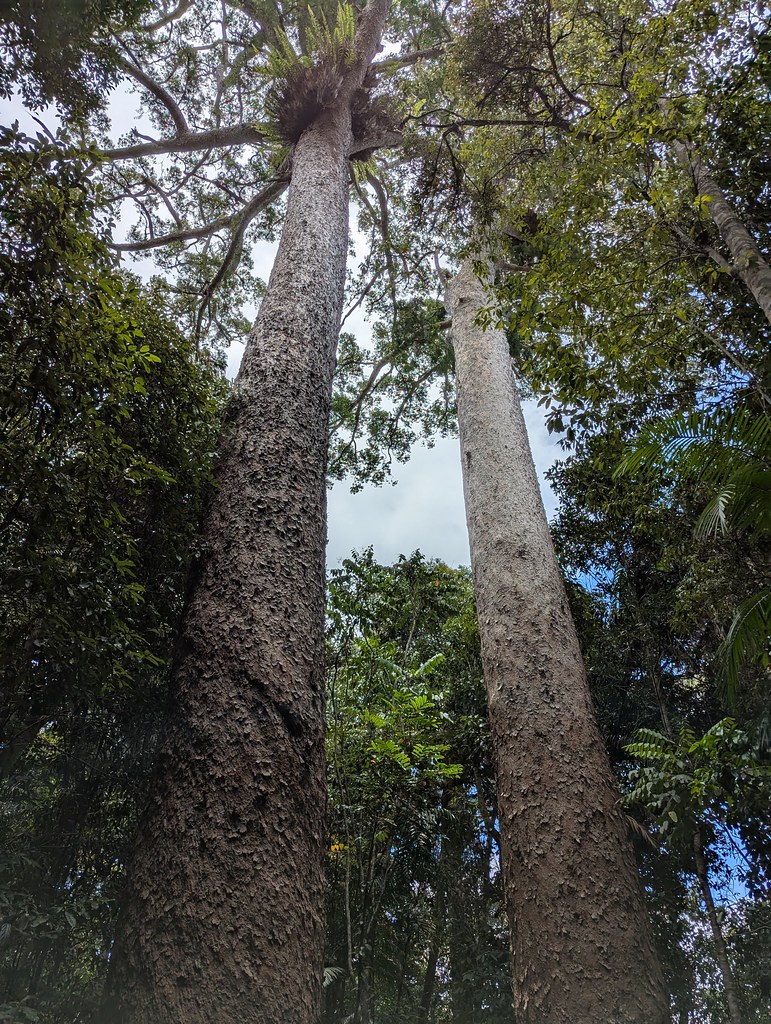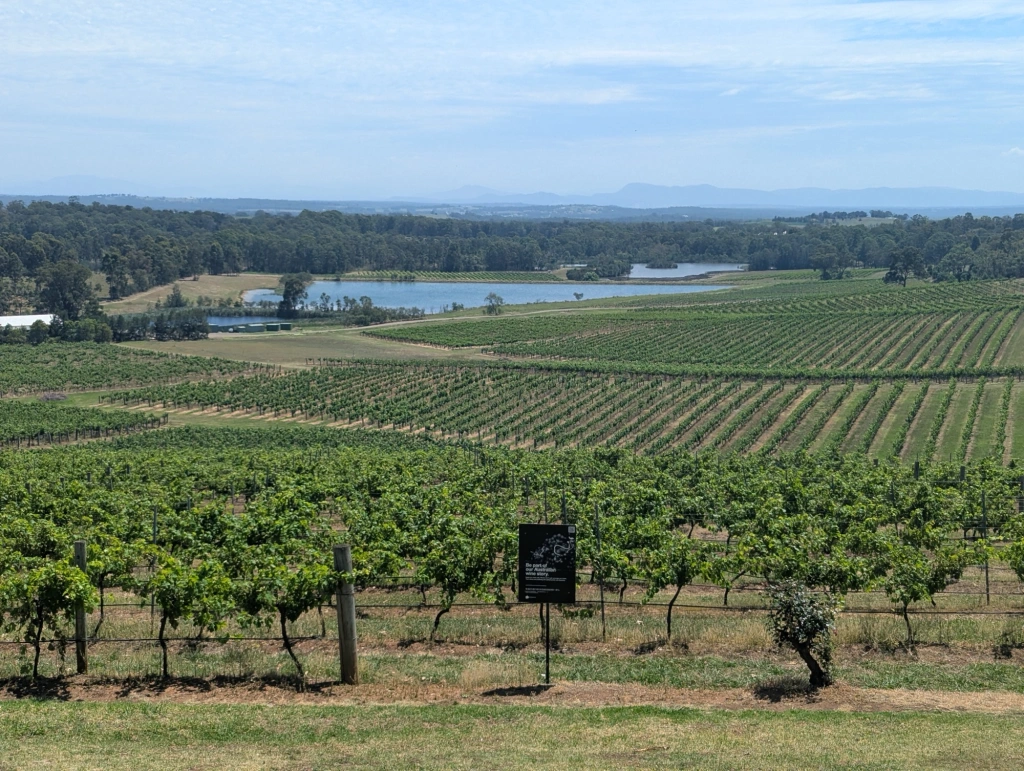The Atherton Tablelands

The Atherton Tablelands is a picturesque plateau in tropical North Queensland within an hour’s drive of Cairns. From beautiful waterfalls to crater lakes, rainforests and attractive small country towns, the region has much to offer for a two or three night stay.
The Waterfalls Circuit
Millaa Millaa Falls

Located on Theresa Creek Road and just a short walk from the free car park, Millaa Millaa Falls are truly magnificent and very photogenic as they are surrounded by lush rainforest. The waterfalls cascade perfectly to a pristine waterhole where it’s safe to enjoy a refreshing swim. There’s also a lovely grassy picnic to relax and take in the views.
Zillie Falls
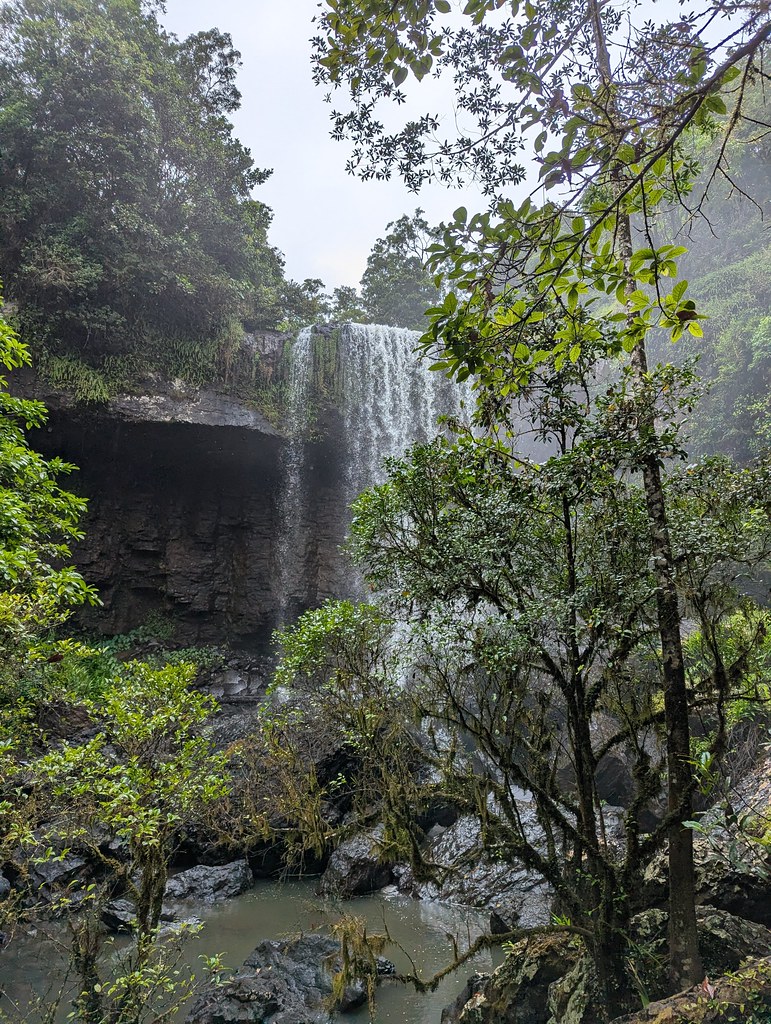
Zillie Falls are located slightly further along Theresa Creek Road and this is another spectacular cascade on the Waterfalls Circuit. It’s a fairly steep climb down to the viewing platform at the base of the falls but well worth the hike to enjoy a view of the cascading water and rapids.
Ellinjaa Falls
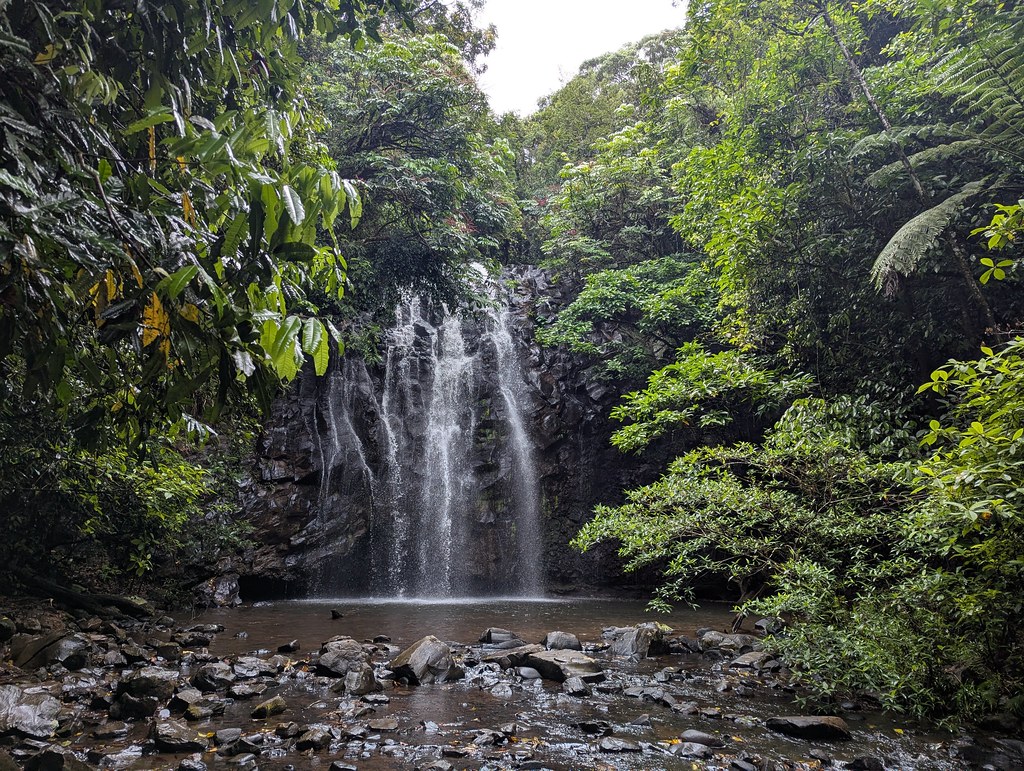
This is the third and final waterfall you come to on the Waterfalls Circuit from Millaa Millaa. It’s yet another pretty waterfall set amid lush rainforest. The track down to the base of the falls is much easier than at Zillie Falls with well maintained steps.
McHugh Lookout Point
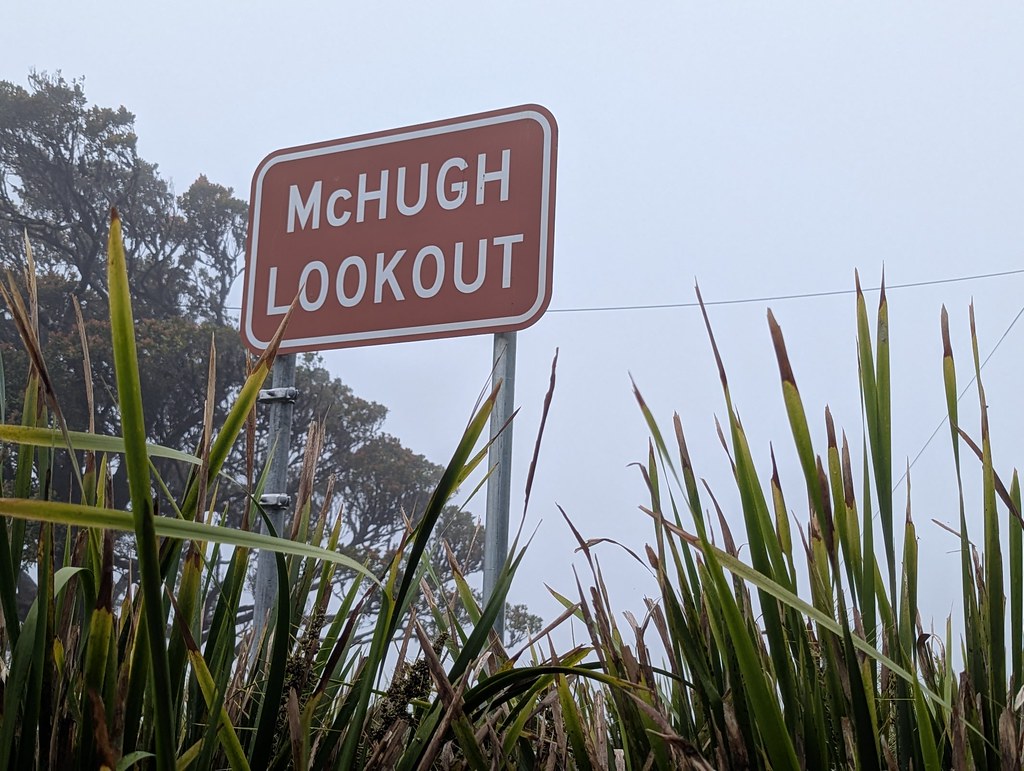
The lookout is just a ten minute drive from the main town of Milla Milla and offers panoramic views to the south and south east. On a clear day there are breathtaking landscape vistas down to the valley floor with the backdrop of Mt. Bartle Frere, Queensland’s highest mountain. As can be seen from the above photo, there was so much low lying mist that we unfortunately weren’t able to see anything.
Yungaburra

This small town lies 750m above sea level and its name translates to Meeting Place in local indigenous dialect. Its a delightful little place with numerous period buildings, including the Yungaburra Hotel which we ate at one evening, serving very reasonably priced and hearty roast dinners. Walking through the town we were drawn to a Platypus viewing point beside a stream but didn’t see any on our visit, as the information board noted that they are typically only active after dusk, being largely nocturnal animals.
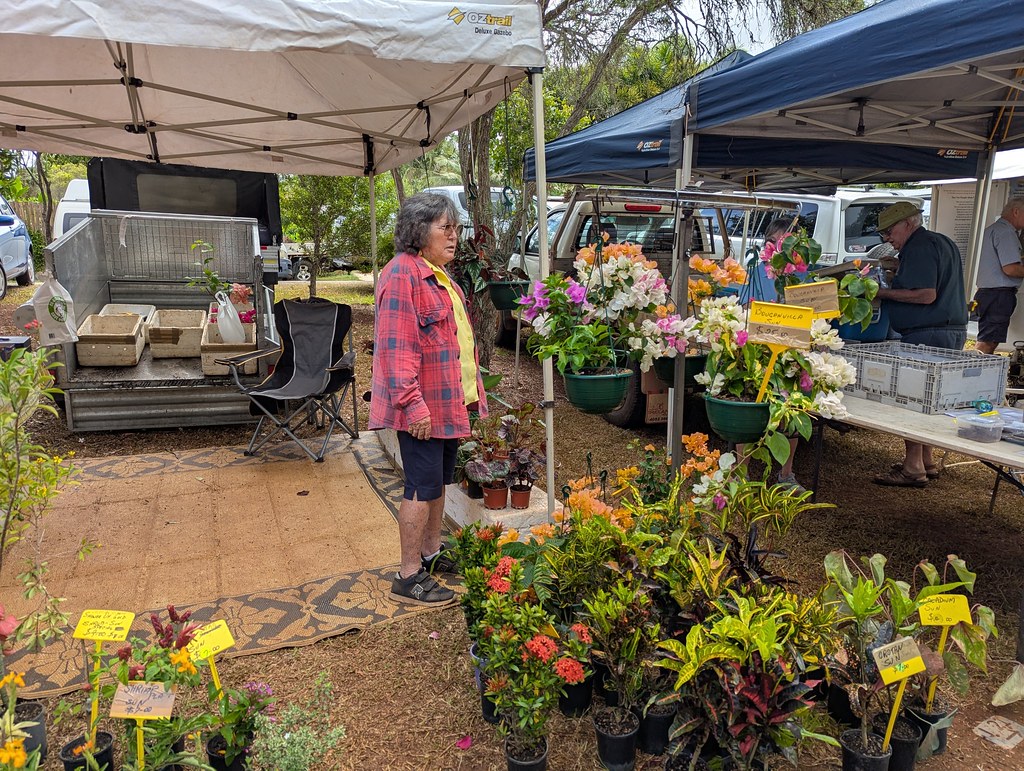
We happened to be in town to coincide with the monthly Saturday morning market which is a huge event. We couldn’t believe how many stalls there were, offering anything and everything from local fresh produce to handicrafts, plants, coffee and street food stalls. There were also a vast number of cars and people who were enjoying a morning out. Highly recommended if taking place during your visit.
Curtain Fig Tree
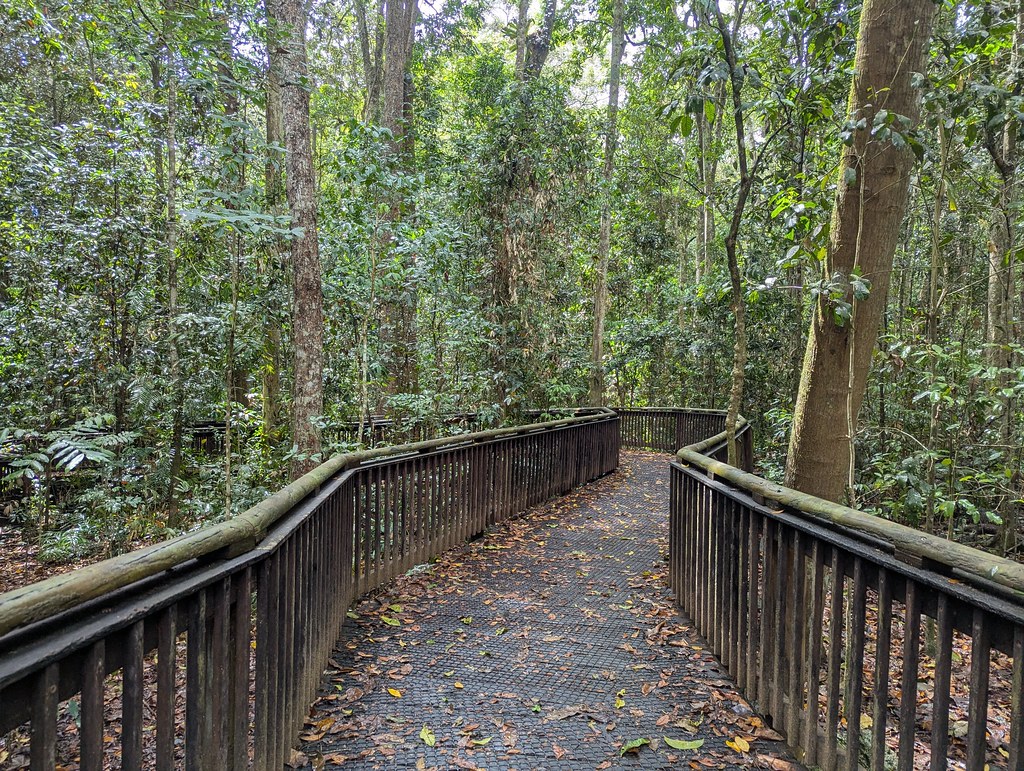
Located 2 km’s from Yungaburra along the Gillies Highway to Fig Tree Road. We viewed the spectacular curtain fig tree which is nearly 50 metres tall, with a trunk circumference of 39 metres, and estimated to be over 500 years old. It is unique because the extensive aerial roots that drop 15 metres to the forest floor, have formed a ‘curtain’. Starting from a seed dropped high in the canopy, this strangler fig grew vertical roots, which gradually became thicker and interwoven.
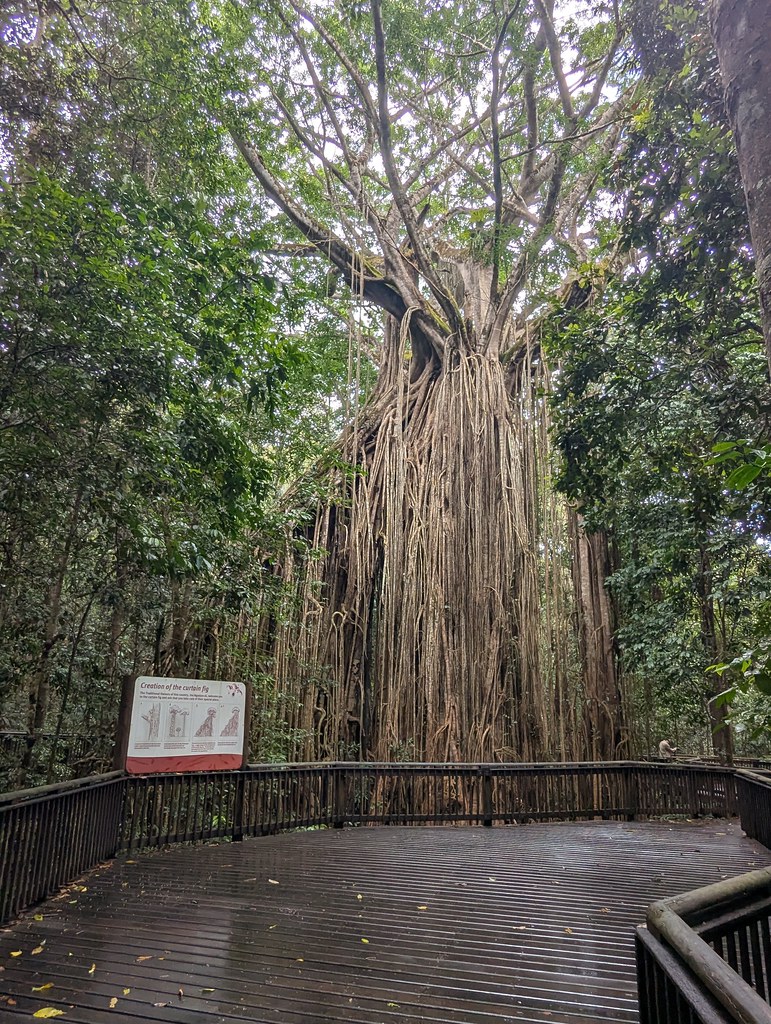
Over hundreds of years the roots have strangled the host causing it to fall into a neighbouring tree, a stage unique to the development of this fig. Vertical fig roots then formed a curtain-like appearance and the host trees rotted away, leaving the freestanding fig tree. Access is from the car parking area and follows an elevated 180 metre return boardwalk that encircles the curtain fig, protecting the roots while allowing for uninterrupted views from all angles.
Gillies Range Road

For a memorable drive to Yungaburra, take Australia’s winding highway, Gillies Range Road, to the top of the range. We tested our driving skills along the road with its 263 corners and 800m elevation change in 19km of road. At one end we stopped off for coffee at The Gillies Cafe and Deli.
Lake Eacham
Lake Eacham is located in the Crater Lakes National Park up the Gillies Range. The clear blue volcanic lake is easily accessible from the car park. Our visit was early morning and families were making good use of the lake for swimming, kayaking and stand-up paddle boarding.
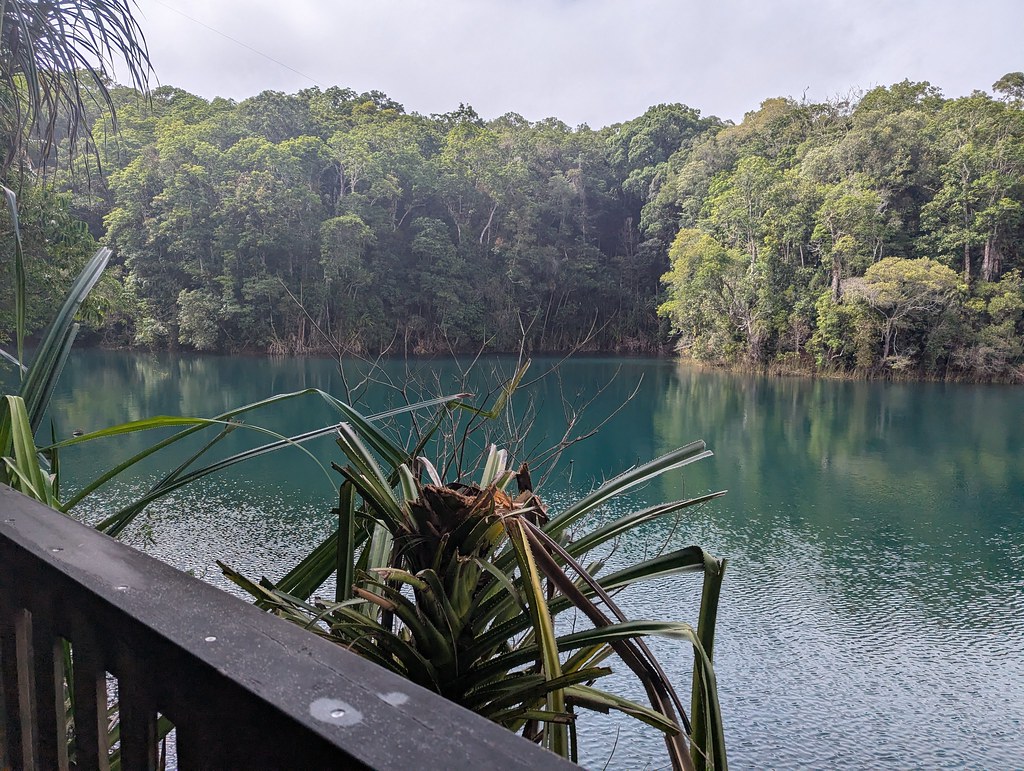
Located to one end of the car park just off McLeish Road is the excellent Rainforest Visitor Centre that describes the clearing of tropical rainforest for timber and agriculture and the partial restoration of the rainforest today. The visitor centre is open Monday, Wednesday and Friday from 9am to 1pm.
Malanda Falls

The Malanda Falls are located 1km from Malanda on the Malanda to Atherton Road. While many of the waterfalls in the area are off the beaten track, Malanda Falls are right by the main road and quick and easy to get to. The falls are 4 metres high and 30 metres wide and the cool, fresh water tumbles over old basalt lava flows. The wide falls are very photogenic but the view is somewhat marred by a man-made concrete swimming pool that has been constructed in front of them. The adjacent visitor centre has interesting displays about the native wildlife and about how the local volcanic features were formed. Across the road is the access point to several trails and a short distance along one of them we spotted numerous sea turtles.
Ravenshoe

Ravenshoe is the highest town in Queensland and boasts the state’s highest road at 1,162m above sea level.
Millstream Falls
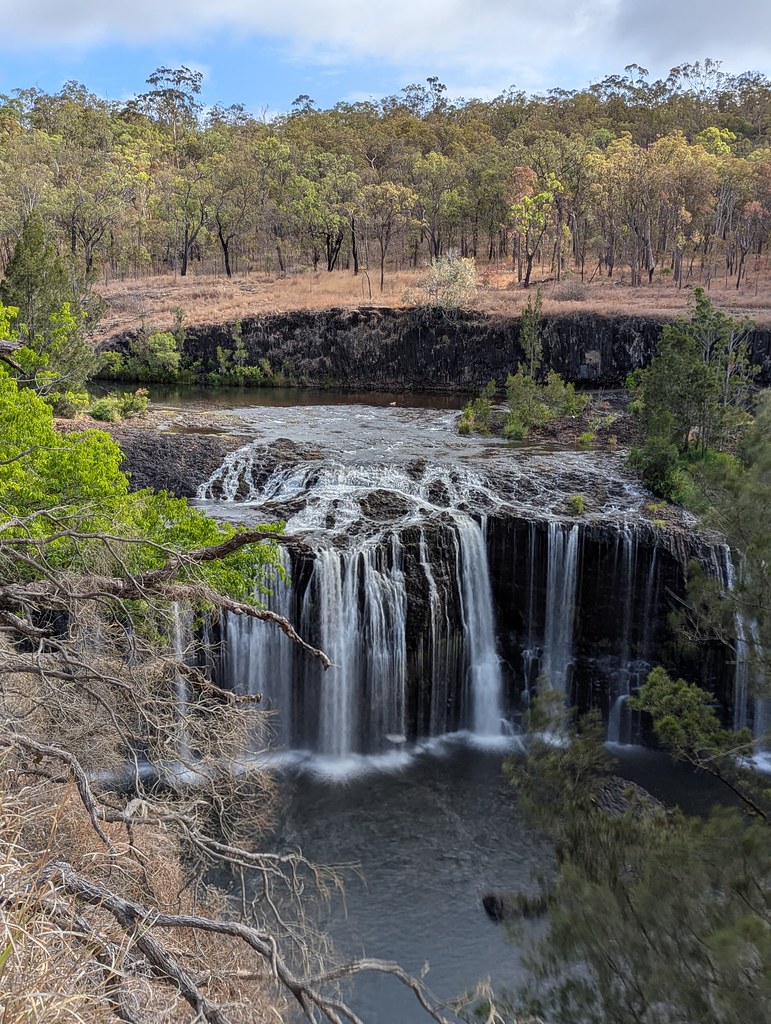
Located just off the Kennedy Highway in Ravenshoe, the Big Millstream Falls are definitely worth a visit. Reputed to be Australia’s widest single-drop waterfall, they cascade over the edge of a basalt column and are very attractive. Access is via a well maintained path taking around ten minutes that leads from the parking area. Citrus Gum trees along the top of the trail gave off a delightful citronella scent which we found to be very refreshing.
Mount Hypipamee Crater
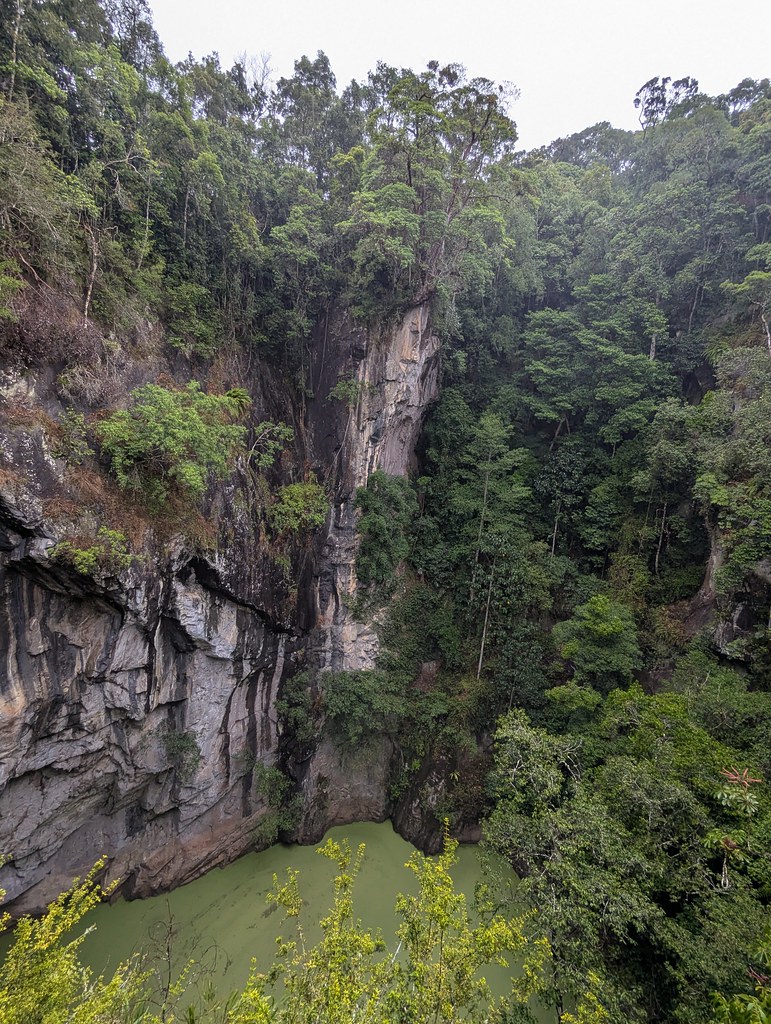
Located on Mount Hypipamee Crater Road in Upper Barron, it’s a very easy trail to the viewpoint where you can look down the crater. This volcanic pipe was opened upward through surface rocks by gas produced from molten rock below. From the viewing platform to the bottom of the lake is 130m and the actual lake is 73m deep. The water had a greenish colour when we visited.
Mareeba Heritage Centre

A very interesting museum featuring indoor and outdoor streetscapes focussing on the history of the town. Exhibits include a windmill, a rail ambulance and a large gallery documenting the importance of the town’s tobacco industry. Jamieson House has been moved to the museum, rebuilt there and furnished with elegant period items in room layouts. The heritage centre also has a cafe with a large outdoor terrac
Skybury Farm
Located just outside Mareeba at the top of the Great Dividing Range, we called into the oldest commercial coffee plantation in Australia. Here we enjoyed complimentary tastings of their Arabica coffee. The plantation’s location 520 metres above sea level on well drained soil and with no frost provides the ideal climate for coffee growing.
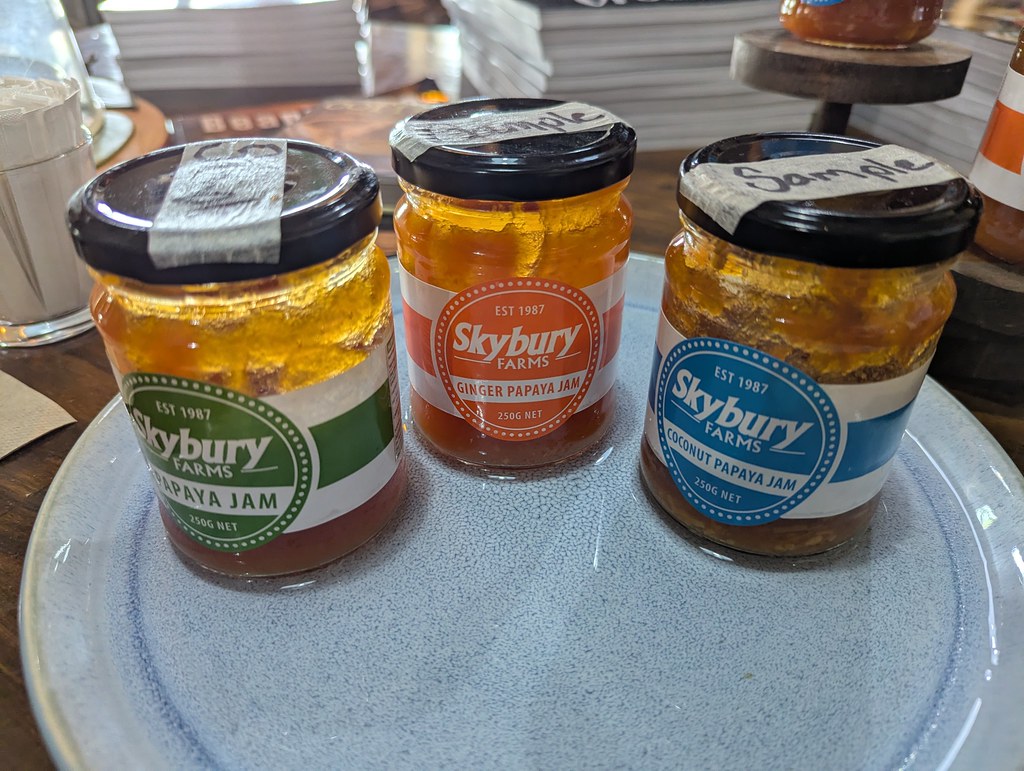
Skybury is also noted for its Carica Papaya which is hand harvested from the trees when it first shows colour. We also enjoyed tastings of their papaya jam which we thought was so delicious that we bought some to take back home. We learnt that Skybury send out 150,000 kgs of papaya every week. We were returning home the following day but bought 1 kg of papaya to eat for dessert that evening. On-site there’s also a restaurant and gift shop. Skybury Farms
Stay:
Chambers Wildlife Rainforest Retreat
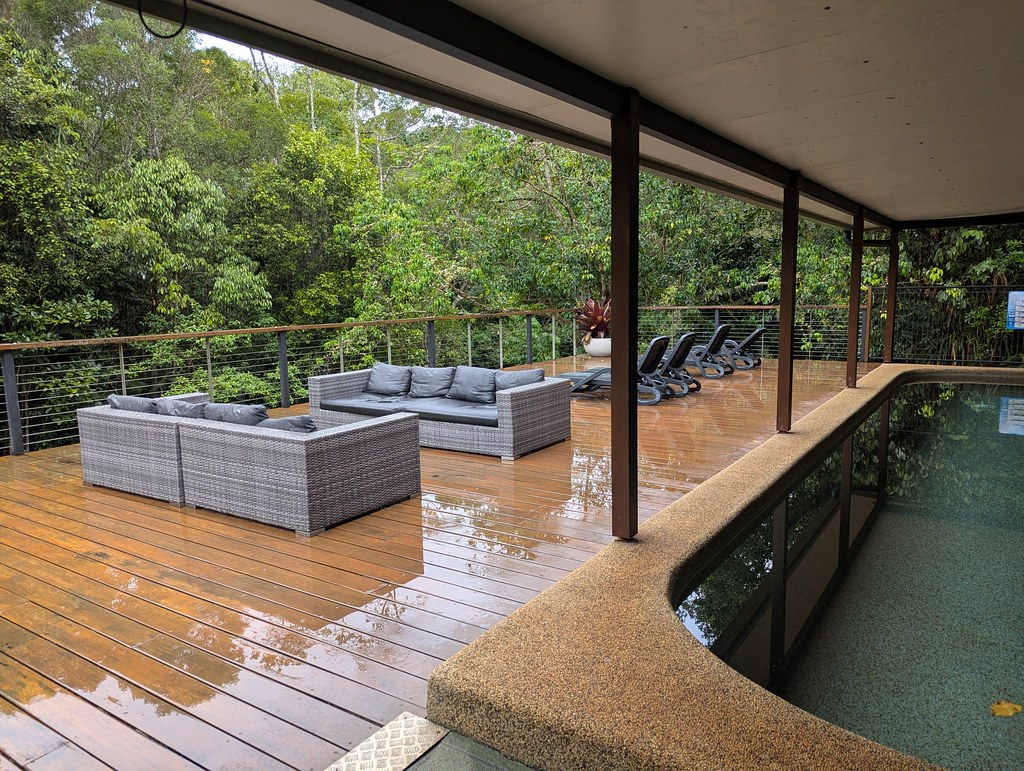
We based ourselves at the Chambers Wildlife Rainforest Retreat located along a track deep in the rainforest yet quite close to Lake Eacham. Accommodation is in rustic lodges and studios set amid the rainforest with balconies.
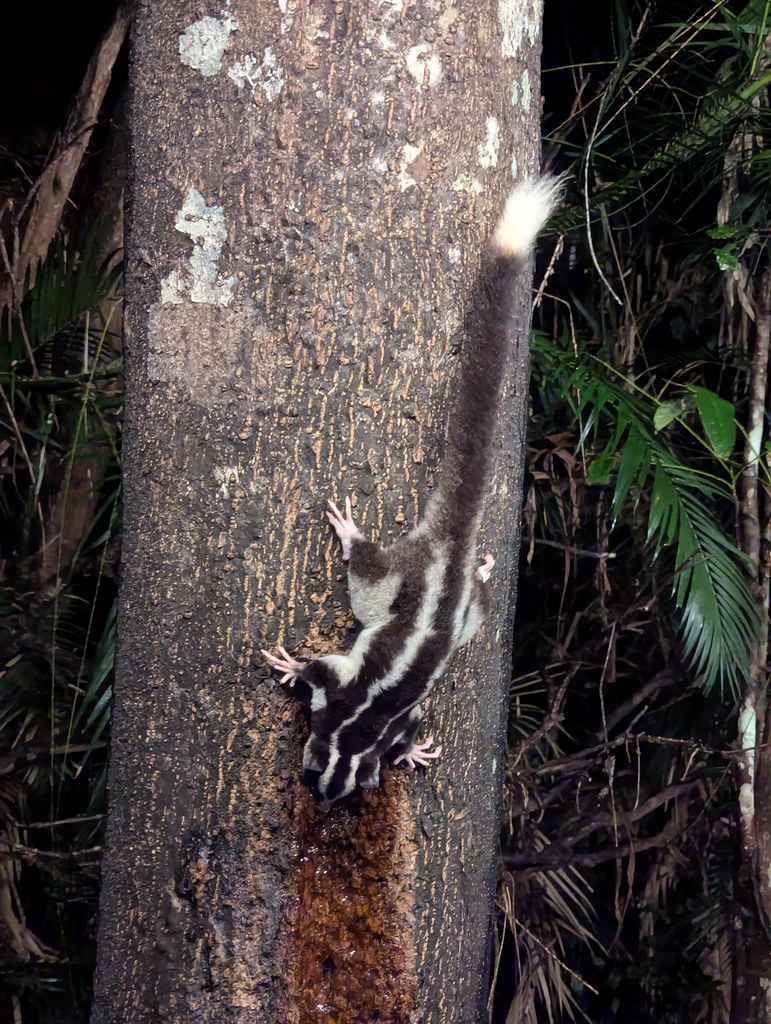
Each evening food is placed on and around the trees by their viewing platform and it is where we spotted a striped possum and a long nosed bandicoot.
Cafes and Tea Rooms
Mungalli Creek Dairy Cafe
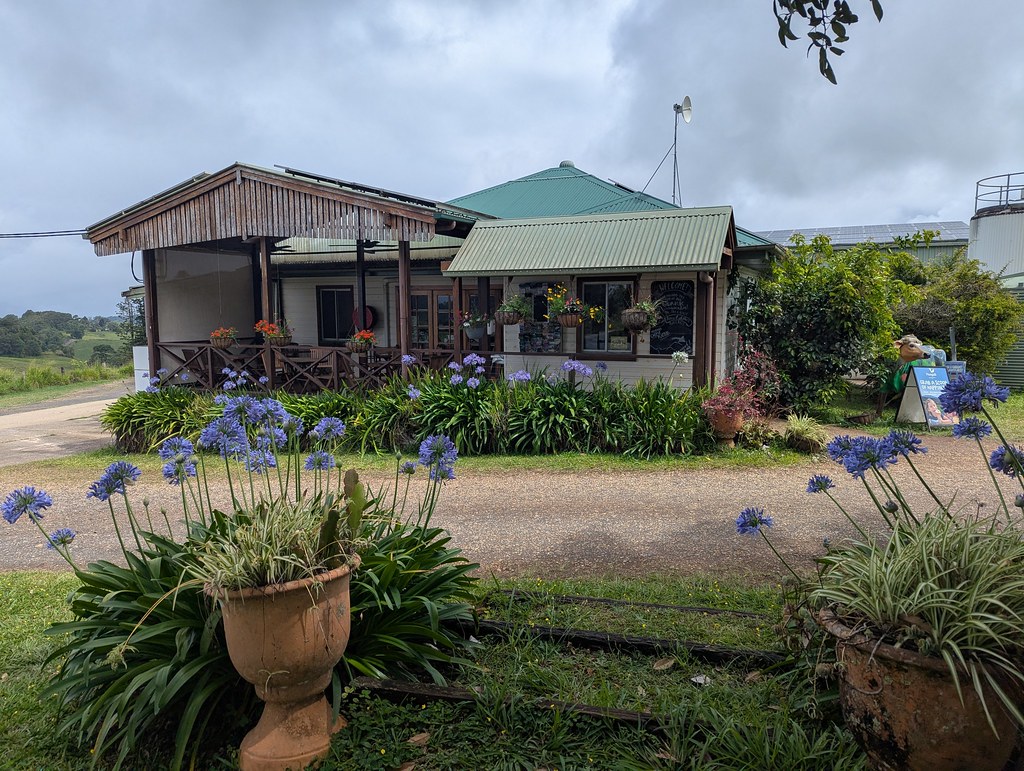
Mungalli Creek Dairy Cafe is located a ten minute drive from Milla Milla Falls. We enjoyed a Devonshire cream tea out on their terrace and there’s also a cosy cafe indoors. It’s open daily and free tastings of their seasonal cheeses and yoghurt from their on-site dairy are sometimes on offer too.
Lake Barrine Teahouse

This cafe is located in a beautiful setting overlooking Lake Barrine and boasts a large outdoor terrace. Pleasure boat trips can be taken across the lake and it’s also the starting point for the short trail to the Twin Kauris (Rainforest Bull Giants) which tower over the forest at over 45m tall and with a girth of 6m.
